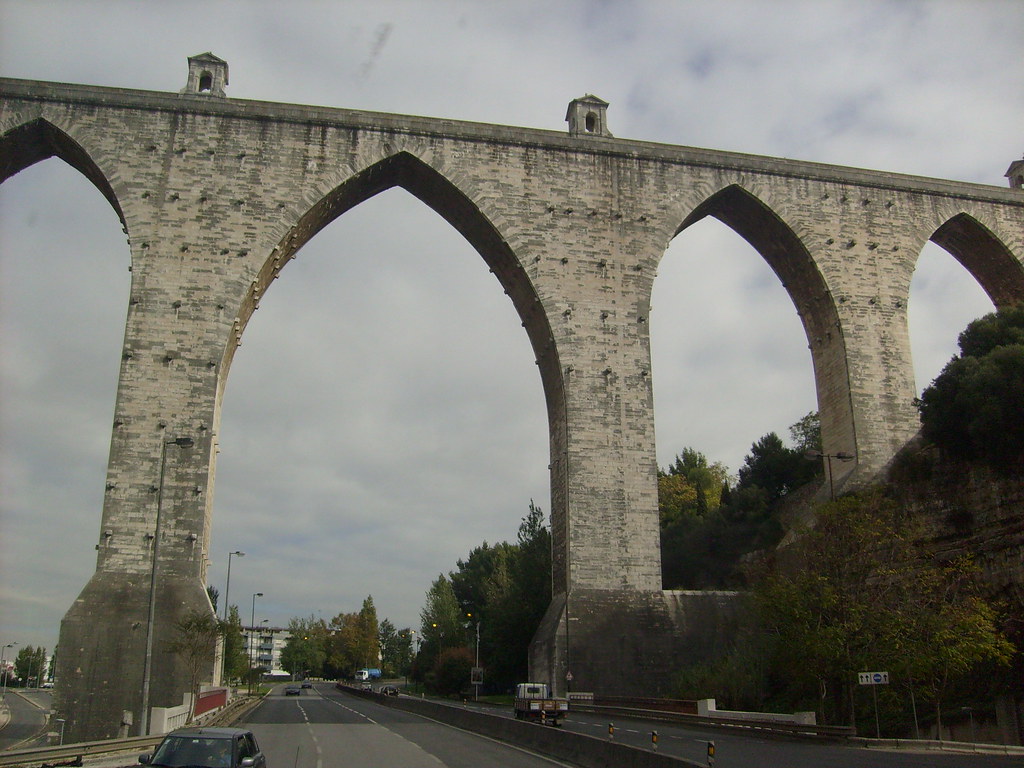From Wikipedia, the free encyclopedia
The city of Lisbon has always suffered from the lack of drinking water, and King John V decided to build an aqueduct to bring water from sources in the parish of Caneças, in the modern municipality of Odivelas. The project was paid for by a special sales tax on beef, olive oil, wine, and other products.
Construction started in 1731 under the direction of Italian architect Antonio Canevari, replaced in 1732 by a group of Portuguese architects and engineers, including Manuel da Maia, Azevedo Fortes and José da Silva Pais. Between 1733 and 1736, the project was directed by Manuel da Maia, who in turn was replaced by Custódio Vieira, who would remain at the head of the project until around 1747.
Custódio Vieira conceived the centerpiece of the aqueduct, the arches over the Alcantara valley, completed in 1744. A total of 35 arches cross the valley, covering 941 m. The tallest arches reach a height of 65 m, and many are pointed, reminiscent of arches in Gothic style. It is considered a masterpiece of engineering in the Baroque period.
In 1748, although the project was still unfinished, the aqueduct finally started to bring water to the city of Lisbon, a fact celebrated in a commemorative arch built in the Amoreiras neighbourhood. From this period on, construction was overseen by other architects, including Carlos Mardel of Hungary and others. During the reigns of José I and Maria I, the network of canals and fountains was greatly enlarged.
The Mãe d'Água (Mother of the Water) reservoir of the Amoreiras, the largest of the water reservoirs, was finished in 1834. This reservoir, with a capacity of 5,500 m³ of water, was designed by Carlos Mardel. It is now deactivated and can be visited as part of the Museu da Água (Water Museum).








5 comments:
Awesome post, beautiful photos, great information!! I like history.
love your shots!
Houa ! The "aqueduc" is very high ! Thank You for the explaiN...
The other photo is beautiful...
Have a good day !
Beautiful structure and great information. Great engineering for so long ago. I guess you are not thirsty now. MB
Great work, informative post.
Post a Comment